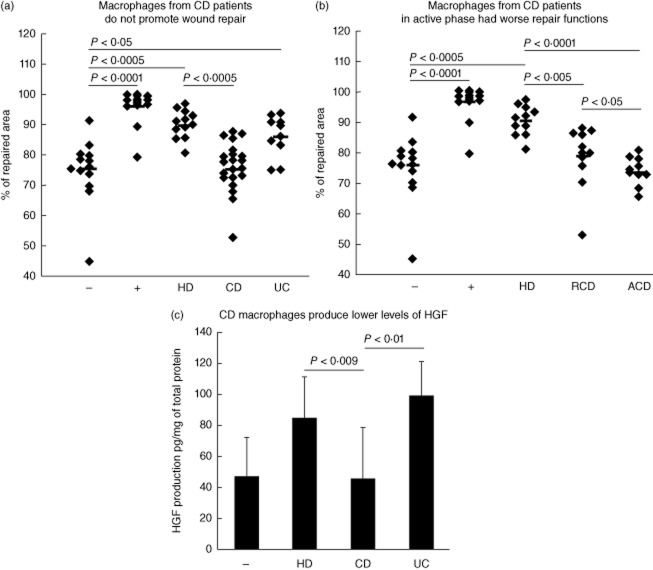Fig. 4.
Macrophages from Crohn's disease (CD) patients are unable to promote wound repair. (a) Wounded Caco2 cells were seeded with Dulbecco's modified Eagle's medium (DMEM) 0·5% fetal calf serum (FCS)with 105 macrophages from healthy donors (HD, n = 14), Crohn's disease patients (CD, n = 22, 11 in remission and 11 in active phase of the disease) or ulcerative colitis patients (UC, n = 10, seven in remission and three in the active phase of the disease). In negative (–) and positive (+) controls wounded Caco2 cells were seeded with DMEM 0·5% FCS or DMEM 10% FCS, respectively. (b) Wounded Caco2 cells were seeded with DMEM 0·5% FCS with 105 macrophages of healthy donors (HD, n = 14), of Crohn's disease patients with disease in remission (RCD, n = 11) or with active disease (ACD, n = 11). (c) hepatocyte growth factor (HGF) protein concentrations measured by enzyme-linked immunosorbent assay (ELISA) and expressed as pg/mg of total protein in the culture supernatant of wounded Caco2 cells seeded with 105 macrophages from healthy donors (HD, n = 9), Crohn's disease (CD, n = 13) or ulcerative colitis (UC, n = 4) patients. HGF concentrations were determined at 72 h of culture. Comparison between several groups to identify a trend was performed by a one-way analysis of variance (anova) test with Trend test as post-test.

